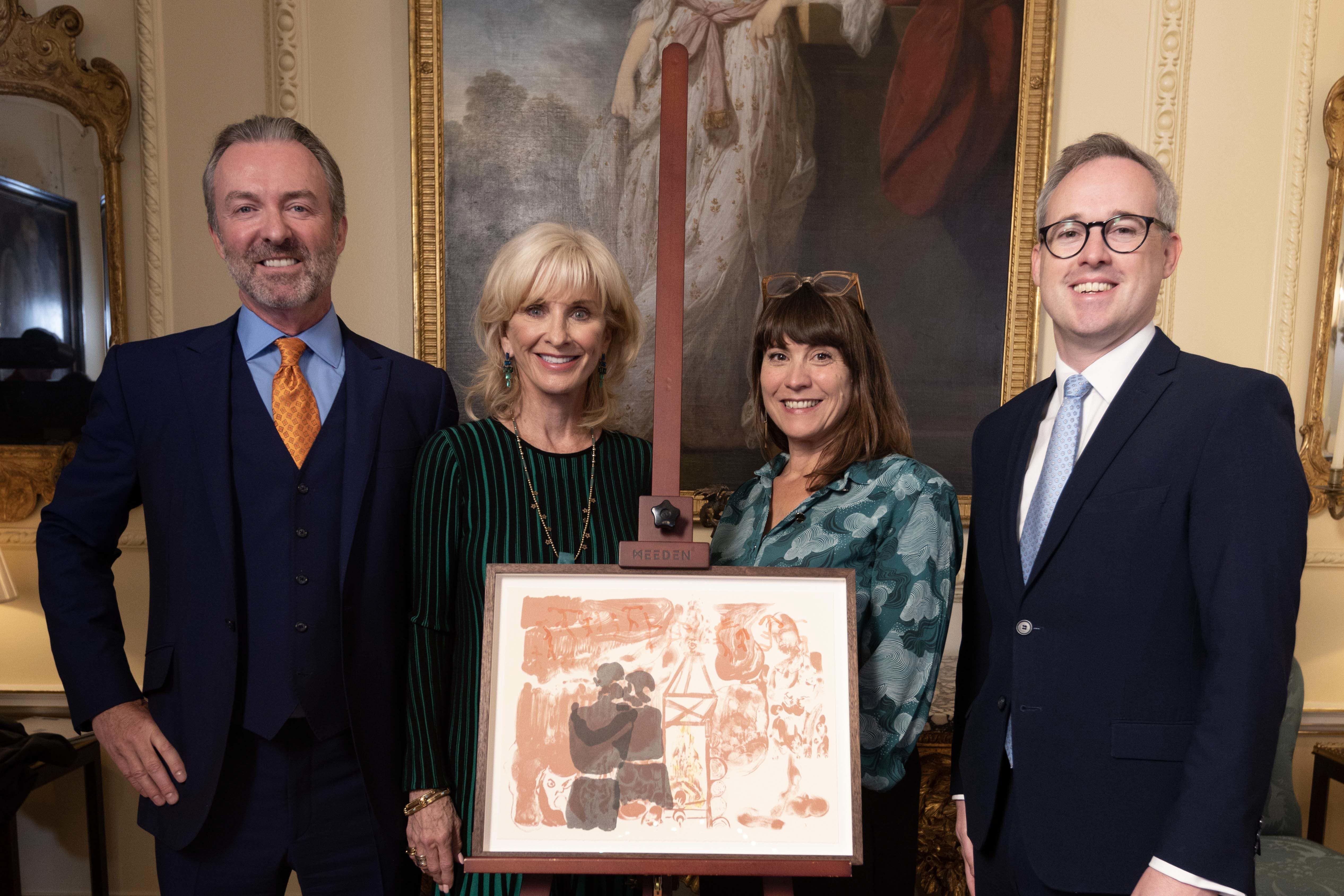Michael Armitage print unveiled as new artwork for diplomatic buildings
The Government Art Collection has commissioned a unique limited edition print by a leading British artist every year since 2018.

Your support helps us to tell the story
From reproductive rights to climate change to Big Tech, The Independent is on the ground when the story is developing. Whether it's investigating the financials of Elon Musk's pro-Trump PAC or producing our latest documentary, 'The A Word', which shines a light on the American women fighting for reproductive rights, we know how important it is to parse out the facts from the messaging.
At such a critical moment in US history, we need reporters on the ground. Your donation allows us to keep sending journalists to speak to both sides of the story.
The Independent is trusted by Americans across the entire political spectrum. And unlike many other quality news outlets, we choose not to lock Americans out of our reporting and analysis with paywalls. We believe quality journalism should be available to everyone, paid for by those who can afford it.
Your support makes all the difference.A new print exploring the complexities of grief by Kenyan-born British artist Michael Armitage is to be displayed in diplomatic buildings.
Each year a British artist is commissioned to produce a print to go on show in government buildings.
The artist’s print, Ngaben, was unveiled on Tuesday morning at 10 Downing Street as it was awarded the 2023 Robson Orr TenTen Award, presented by the Government Art Collection (GAC), a national collection of British art that is displayed around the world.
Ngaben is a Hindu cremation ceremony practised in Bali and Armitage’s lithograph was inspired by his personal experiences of grief after the death of a friend in Indonesia.
Mask-like faces crowd the bottom of the print, while two women hold each other as they watch the flames.
Talking about the piece, Armitage said: “Culture exists in the most difficult moments of people’s lives, at points at which they grieve and points at which they experience loss, it exists in celebration.
“It’s a reminder that we’re not here as isolated individuals, we’re here as something greater, and we have a responsibility to each other.
“For me, that’s really what it is to be an artist … it’s a very hard thing to quantify but it’s entirely necessary.”
Armitage, who was born in Nairobi in 1984 to a Yorkshire father and Kenyan mother, is best known for his oil paintings on Lubugo bark cloth, used by the Baganda people in Uganda to make burial shrouds, and his work often weaves narratives drawn from media and popular culture.
The award is a 10-year scheme, started in 2018 with the support of philanthropists Sybil Robson Orr and Matthew Orr, which commissions a unique limited edition print by a leading British artist each year.
Previous artists who have won the award and had their prints displayed across the globe include Lubaina Himid, who won in 2021 for her work exploring colonialism, and Rachel Whiteread, who won in 2022 with a Covid-inspired piece.
The Government Art Collection is given 15 editions of the print to put on display in UK Government buildings, and the sale of 11 editions helps raise funds for the collection to support emerging artists in Britain.
Discussing Armitage’s art work, Robson Orr said she was “really blown away” by the print and expressed its importance for students in their education programme.
Eliza Gluckman, director of the GAC, said: “Michael Armitage’s moving print marks the importance of international and intergenerational peer support of artists.”